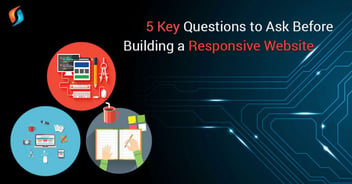Originally published at E-Learning Industry on 15 March 2020.
We have easy access to a plethora of information, all thanks to mobile devices and internet connections. From food delivery to the share market, if we want to learn about anything we go online. Basically, the internet is our never-ending book on our fingertips.
But there is also so much ambiguous information on the internet that you might never know which one is authentic. This is where eLearning websites enter.
The e-learning market is estimated to surpass $243 billion marks in 2022.
Online learning platforms, e-learning marketplaces, e-learning web conferencing software, are 3 types of eLearning websites. They are becoming quite popular amongst the masses.
To give you a basic idea about the difference in these types of websites we have added a brief description.
- Online learning platforms: These websites follow a “be your own teacher'' approach. These platforms serve content remotely. Students get to learn independently at their own pace while tracking their progress as they move forward. The content is in the form of videos, blogs, PDFs, etc. In this matter, A-level tutors online can leverage online learning platforms to supplement their teaching and enhance student engagement.
- Elearning marketplaces: These platforms follow a one to one class with educators via online classes. They provide the students with the option to choose their courses and teachers as per their needs. Gamification, quizzes, progress tracking are some of the interaction methods.
- Elearning web conferencing software: To facilitate online learning for a large group falls under this category. On this platform, people need to join in order to interact with fellow learners. These platforms are quite popular in universities and similar educational establishments that want to engage large masses.
Related Read: Why Every Startup Needs a Website?
10 eLearning Website Development Tips
In order to ensure that you follow the best practices for your eLearning website development, we have compiled a list of tips that will help you out.
- Find and study your target audience
- Create great content
- Engage good educators
- Regular assessments
- Reward System
- Offer certificates
- UI/ UX is important
- Feedback and ratings
- Multi-language approach
- Promote your eLearning platform
Let's discuss these tips in detail!
Tip 1: Find and study your target audience
Before you work on developing an app or website for your eLearning platform you should analyze your audience.
Think hard about what your niche is and ask the questions:
- Who do I want to target?
- How can I possibly improve the skills and knowledge of users coming on your platform?
- How will technology help them engage?
- What are people interested in learning or what interests them?
- What will the age group and their demographic attributes be?
Once you have the answers to these questions, you will be able to make a road map based on your requirements and needs.
Tip 2: Create great content
Before you start with the eLearning website development, make sure that you have all the prerequisites and the relevant content. Your users should not come on an empty platform, there should be information that they learn like images, texts, audios, infographics, videos, slides, etc.
All these things should add value as people perceive information differently. Variety along with gamification can help you gain more users as these have become prominent methods to educate students without boring them to death.
Tip 3: Engage good educators
Once you have the content make sure it is delivered by skilled educators. You can partner with teachers from different countries to create a unique brand image. E.g. french teacher for french language classes. Try to the best of their field teachers on board and it will serve as an additional marketing tool.
E.g. MasterClass hosts prominent teachers like Marc Jacobs, Jane Goodall, Margaret Atwood, Armin van Buuren, Steve Martin, and Anna Wintour many more. They are experienced and top experts in their field.
Tip 4: Reward system
When someone appreciates our efforts, humans tend to do more. The same goes for students when they feel like their efforts are noticed and praised they put more effort to perform better. You can have a reward system in place for completing chapters by treating them as levels. Have badges, rankings, and quiz games to make it fun. Incorporating a quiz plugin into the learning platform can add an interactive element, allowing educators to create personalized quizzes that align with the content of each chapter.
Tip 5: Regular assessments
E-learning platforms should help students analyze and track their performance to make effective use of assessments. Pop-tests or quizzes are an interactive way of testing the material they've covered thus far. While providing the results, instead of going for plain marks share their strengths and weaknesses. This will help students focus on their weak points
Tip 6: Offer certificates
Certificates after course completion help students’ self-esteem. It can also help give them good prospects as their skills and knowledge will be backed up by verified certificates. If you are opting for a custom web development solution, you can even add a leaderboard system to make it a bit more fun and competitive for the best-performing students. Whoever tops can get honors certificate or discounts on other courses.
Tip 7: UI/ UX is important
Visuals always speak louder than words. The usability of your eLearning space and its user interface can make or break your platform. Make sure you follow a minimalistic theme with easily accessible interface elements. Try to keep it simple as students might get distracted if there are a lot of unnecessary elements on the screen.
Related Read: How to Make your Websites User-friendly with Custom Web Development
Tip 8: Feedback and ratings
You have good content, good teachers and a great UI. However, if you are still facing issues then getting feedback and reviews from the students can help you tackle the issue at its roots. Stars and teacher ratings from students will help you get an insight into how students and educators actually interact. All these steps can help improve your e-learning space.
Tip 9: Multi-language approach
If your platform is on an international level, then you have to follow a multi-lingual approach. People are more comfortable using their native language. If you provide the ability to switch between languages then the platform may grow into something bigger than you expect.
Tip 10: Promote your e-learning platform
Online promotion is one of the main aspects of any business in this modern world. Promotional strategies for online marketing via social media channels, SEO, SMM, etc. will help build your brand image and reach out to the masses. But apart from that, you should include both online and offline approaches.
Conclusion:
If you want to enter the eLearning market make sure that you keep the above tips in mind. Managing and successfully running an e-learning platform requires lots of attention. Studying your niche market will help you understand what you need in order to make sure that you provide valuable content to your target audience.


%201-1.webp?width=148&height=74&name=our%20work%20(2)%201-1.webp)


.png?width=344&height=101&name=Mask%20group%20(5).png)















